How to reach here:
By Air: The Tezpur Airport is the best and the closest option for those who are arriving by air. The place is connected by flights from cities such as Kolkata and Guwahati.
By Rail: Tezpur has the nearest rail-head which is around 160 km from Tawang.
Best time to visit: March to October.
Languages spoken: Tibetan, Hindi and English.
Must eat: Wungwut Ngam, Pasa, Ngatok.
Places you must visit:
Ganden Namgyal Lhatse the Tawang Monastery is one of the largest lamaseries of Mahayana sects and the second oldest Monastery in the world after Lhasa. The Monastery is housed with more than 500 monks. It has also a centre of Buddhist Cultural Studies where young monks are provided basic education besides traditional monastic education. Now a day, Tawang Monastery is also light up with tiny bulbs emitting its perfect shape and size for the viewers at night. This Monastery was founded by a monk Mera Lama Lodre Gyatso a contemporary of His Holiness Fifth Dalai Lama in 17th century AD. The monastery complex is comprises of more than 65 residential buildings meant for monks. The Monastery also houses the establishment of the Head Priest, living chambers of the Lamas, an ancient library and antique museum.

.jpg)
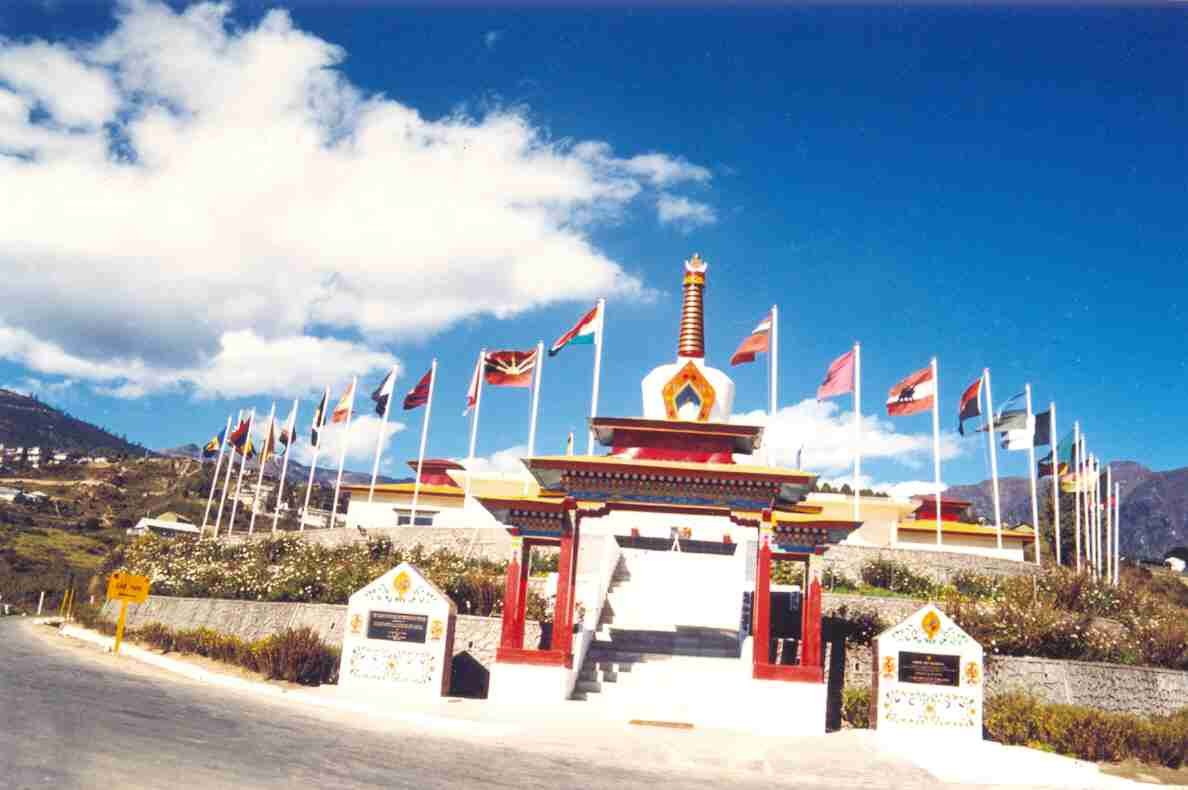
Tawang War Memorial, a 40 foot high multi-hued memorial, has a structure constructed in stupa design. Dedicated to the martyrs of Sino-India War held in 1962, this memorial is nestled among beautiful peaks, which overlooks the Tawang-Chu valley. Popularly known as Namgyal Chorten, the memorial has names of 2,420 dead soldiers. The names of the soldiers are etched in gold on around 32 black granite plagues.Tawang War Memorial comprises two memorial halls. One of the halls has the collection of personal articles of martyrs, while the other is used for sound and light shows, depicting their heroic deeds. The entire memorial was blessed by Dalai Lama. In addition, the Holy Scriptures and idols of Lord Buddha and Arya Avlokiteshwara were also sent by Dalai Lama to this memorial. These idols have been kept in the vaults of the stupa.

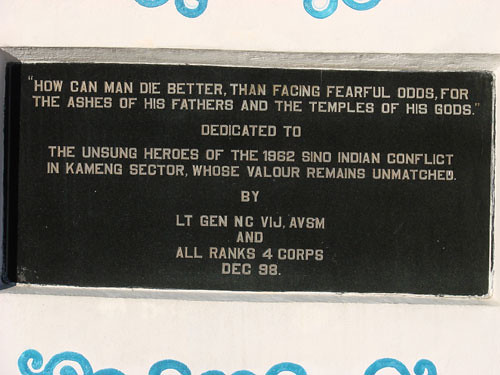
Sela Pass, with a height of 13,714 ft, is one of the most visited places in entire Arunachal Pradesh. Considered to be heaven on earth, the Sela Mountain Pass in winter is entirely covered with snow. Before reaching this pass, the travelers are welcomed by another lake, which is known as the Paradise Lake.


Gorichen Peak, highest peak of Arunachal Pradesh, is located between Tawang and West Kameng districts. Bordering with China, this peak has a height of 22,500 feet. Located at a distance of 164 kilometre from Tawang Township, this peak is also known as Sa-Nga Phu, which literally means the Kingdom of Deity. According to Monpa tribe, this peak is considered to be one of the sacred peaks protecting them from all the evils.The peak is one of the ideal bases for trekking and mountaineering in the entire region.
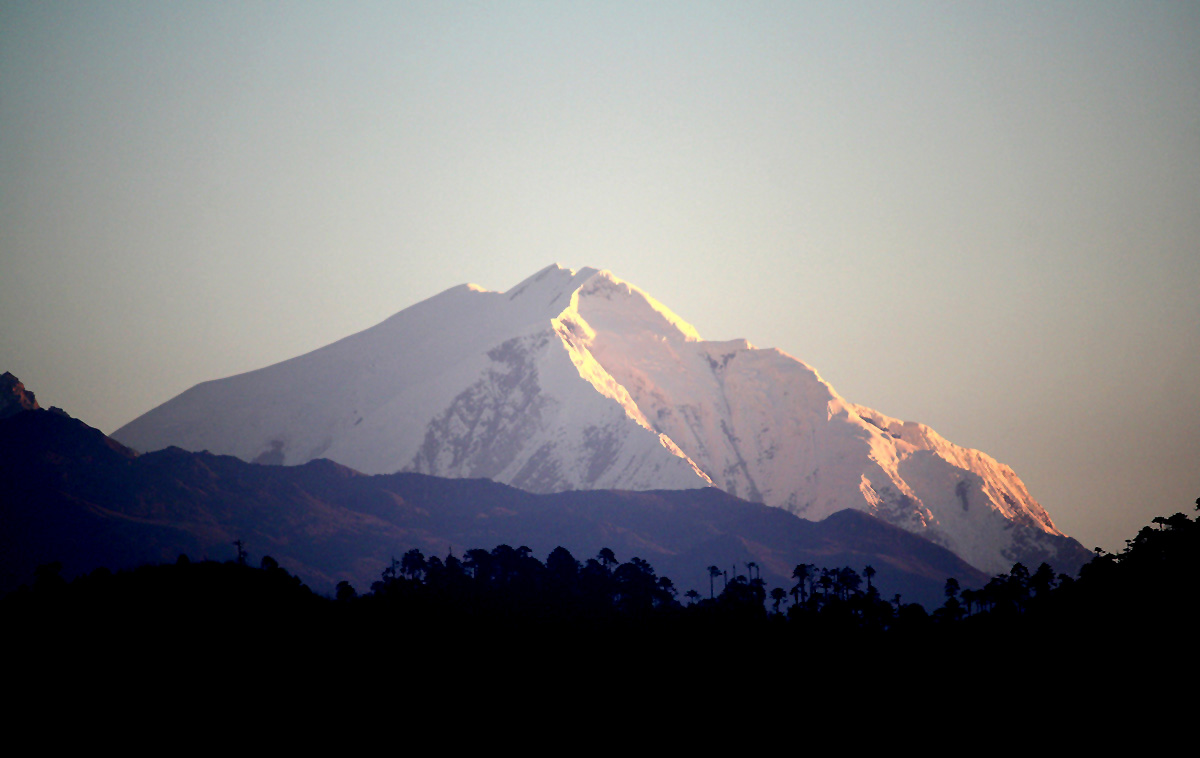

Jaswant Garh is located at a distance of around 21 kilometre from Sela Pass towards Tawang. This Garh is a home of a warrior, Jaswant Singh who sacrificed during the war that was fought against Chinese soldiers. He fought continuously for 72 hours, during the Indo-China war that occurred in 1962. The place is open to travelers to pay a tribute and salute to this great warrior.



Urgelling Gompa, one of the first three monasteries built by Urgen Sangpo, is believed to have been present in Tawang since 14th century. Urgen Sangpo was the youngest brother of the famous Treasure-Revealer, Terton Pempalinga.This place is believed to be the birthplace of His Holiness the 6th Dalai Lama, Tsangyang Tashi. His Holiness the 6th Dalai Lama, born in 1683, was the son of Lama Tashi Tenzin. Lama Tashi Tenzin resided in Urgelling Village and was a descendant of Terton Pempalingpa.


Visit the unique craft center where craftsmen weave cloth and artists make Monpas masks in the traditional way. A government project to uplift and encourage the traditional artists and craftsmen to use the traditional styles and techniques. There is am Emporium from where souvenirs can be bought.

Bap Teng Kang is one of the most panoramic waterfalls, Bap Teng Kang is scenically situated in the hidden paradise of lush green vegetation. It falls from a height of 100 feet in Yumkhang, 85 km on route from Tawang towards Zemithang. You can view a number of waterfalls on the route to Zemithang.
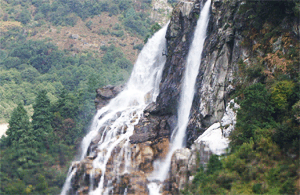

Gorsam Chorten is the largest stupa of the entire area. Believed to be constructed in the early part of 12th century, it is founded by a Monpa monk, Lama Pradhar. On the top of the chorten is a semi-circular dome that rests up on a three-terraced plinth. In addition, on the lower most terrace of the plinth, there are four miniature stupas standing erect on the four corners.The base of this chorten is squared with each side about 170 feet in length with a niche running along its whole length. Moreover, there are around 120 manis set in the wooden frames. Encircling the stupa is a well paved path on which pilgrims go roundabout for praying, which is also known as Kora.
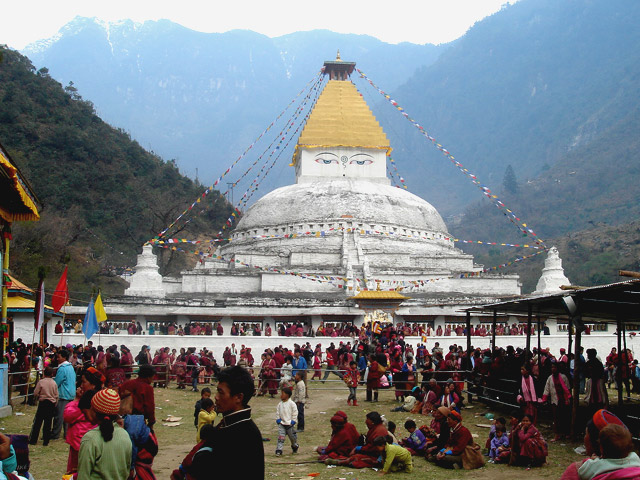

Gyangong Ani Gompa, perched on the top of a beautiful hillock is nunnery, is located at a distance of around 5 kilometre in the north of Tawang. Being home to about 50 Buddhist nuns, it was found by Mera Lam Lodre Gyamtso. This nunnery was subsequently offered to Mera Lam Lodre Gyamsto by his elder sister.
This Nunnery is under the control and management of Tawang Monastery. In addition, the Tawang Monastery provides the things required for everyday needs of the nuns.



Nuranang Water Fall is one of the most beautiful waterfalls close to Jang, the micro hydel project is Nuranang Waterfalls.


Shonga-tser Lake after the shooting of movie Koyla was named by tourists as Madhuri Lake. Shonga-tser Lake was formed in the aftermath of the earthquake, which occurred in 1950.Before 1950, the entire lake area was reserved grassland. This grassland was used by the local people of Tawang district for grazing their cattle. This fact is supported by the presence of dead trees emerging from the middle of the lake. The scenery and the land of this lake entice photographers from all across the world.


Geshila Park is the closest peak to Tawang located just 25 km away at Khrimu. Complete serenity, awesome sights and a multitude of scenic picturesque locations to carry back sweet memories.


Banga Jang Lake, situated in the Banga Jang range, is one of the famous lakes located in proximity to Tawang Township. Every year pilgrims from across the globe visit the lake to acquire heavenly bliss and sanctity.In addition to this lake, there are several other lakes located in the Banga Jang range. According to belief, many pilgrims visiting this lake had an experience of witnessing deities in the lake in several images.

Brahma-dung-chung Ani Gompa is one of the oldest Ani Gompa located in the north of Tawang Township. This Ani Gompa was constructed in 1595 AD by a Lama Karchen Yeshi Gelek of Tsang province of Tibet. At present, the place is also a home to 45 nuns, who are also known as Anis.


Manjushree Vidyapeeth is an only orphanage in Tawang, you can visit and spend some time with the orphans and their caretakers. It is a completely different experience and one that you will never forget.





Taktsang Gompa is one of the most famous tourist attractions. The site of this gompa is believed to be blessed in the 8th century AD by the visit of Guru Padmasambhava.Perched on the ridge of a small hill, the monastery is surrounded by dense coniferous forest, where devotees can conduct a roundabout. It is also believed that it is the same place where Guru Padmasambhava meditated.


Tsachu Hot Springs may require a bit of trekking as the terrain is perfect for that. The scenic route gives you glimpses of lush vegetation, a variety of flora and fauna unique to the region.




 \
\








.jpg)





